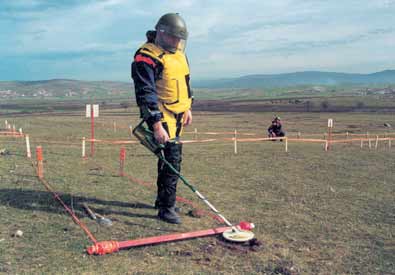DUSHANBE, March 29, 2013, Asia-Plus – Demining teams still have to clear some 7.5 square kilometers of land in Tajikistan, Parviz Mavlonqulov, an official with the Tajik Mine Action Center (TMAC) announced at a seminar on mine action in Tajikistan that took place in Dushanbe on March 29.
According to him, the majority of those areas – 5.2 square kilometers – are located along Tajikistan’s common border with Afghanistan.
According to him, 88 minefields have been cleared in Tajikistan since the TMAC was set up. Last year alone, they cleared 18 minefields. “Demining teams have to clear the remaining more than 170 minefields with a total space of some 7.5 square kilometers,” Mavlonqulov stressed.
Every year, more than 250 persons, including deminers from the Ministry of Defense and partners from international organizations such as Swiss Foundation for Mine Action (FSD), Norwegian People’s Aid (NPA) and some others, are involved in mine-clearing operations in Tajikistan, the TMAC official stressed.
The main donors are Canada, Germany, the United Kingdom, the United States, Japan, Norway, etc.
Most land mines in Tajikistan were reportedly laid during the devastating five-year civil war, which ended in 1997. In some areas the mines still pose a deadly threat as well as a major impediment to effective land use.
Additional mines were laid along the Tajik-Uzbek border by the authorities in Tashkent in the late 1990s. The action was reportedly taken to stave off incursions by the Islamic Movement of Uzbekistan (IMU).
Since 1999, mines have reportedly killed 368 people and injured 478 in Tajikistan.
Tajikistan signed the Convention on the Prohibition on the Use, Stockpiling, Production and Transfer of Antipersonnel Mines and on their Destruction (the Ottawa Convention) in 2000. Tajikistan has reportedly destroyed all anti-personnel land mines it possessed.




